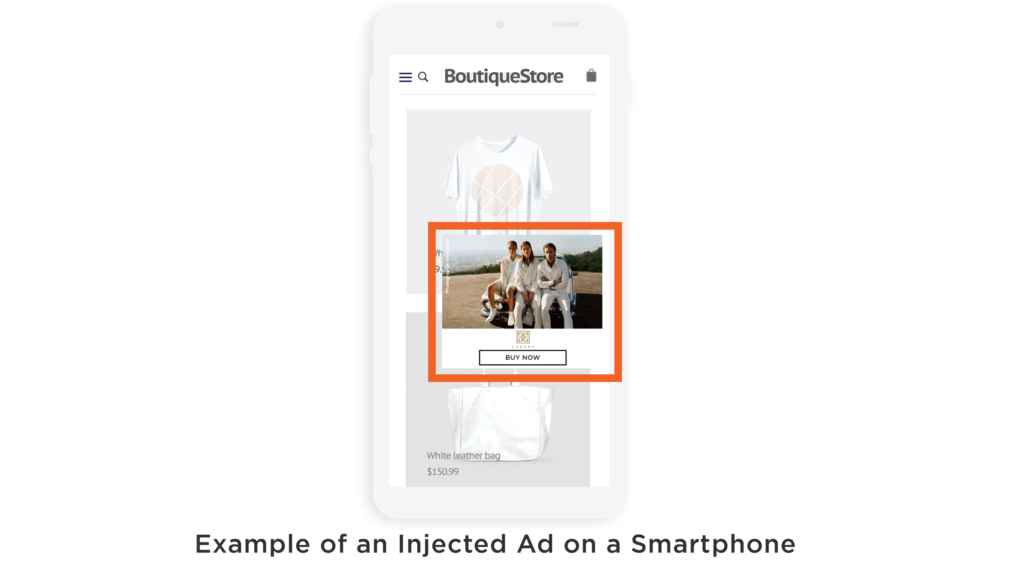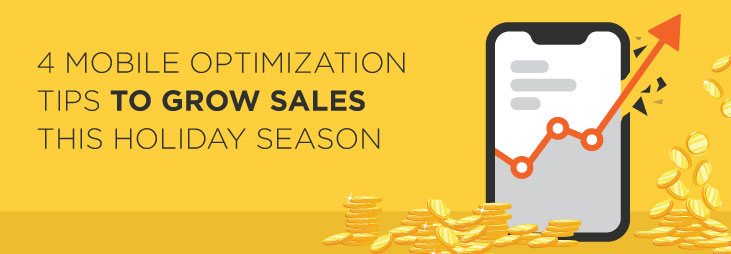With Black Friday barely a month away, this is the time of year for eCommerce businesses to verify that they are fully prepared to make the most of the upcoming holiday shopping season. And in today’s business environment, mobile optimization is increasingly central to those preparations.
In part, that is because of the significant and growing portion of online purchases coming from mobile devices, both during the holiday season and year-round. But there is another important reason that mobile optimization is critical for eCommerce websites: Many shoppers first research products on their smartphones and then make purchases either via desktop computer or at a brick-and-mortar store.
How significant of a role do mobile devices play in retail sales during the holiday shopping season? According to Statistica, in the first quarter of 2019, 28.2% of all eCommerce spending in the U.S. came from mobile devices. And according to the data we at Namogoo collected during last year’s holiday shopping season (November 22 through December 24, 2018), mobile devices saw 34% of online sales in the U.S. and 31% of online sales in Europe. Yet, during the same time period, we found that eCommerce traffic was significantly heavier on mobile devices than on desktop computers – with 65% of U.S. eCommerce traffic and 72% of European eCommerce traffic coming from mobile devices.
With so many consumers turning to mobile devices to conduct research, make a purchase, or both, it is critical for online retailers to accommodate these shoppers effectively. Going beyond basic standards of mobile-optimized websites, offering a fully optimized mobile shopping experience entails ensuring that your online store makes it easy for mobile shoppers to achieve their main goals (which may be quite different from desktop shoppers’ goals). To help you prepare to make the most of the upcoming holiday shopping season, here are four important steps you can take to make that kind of winning mobile experience a reality:
1. Optimize mobile search
Mobile customers usually intend to search for a specific product they have in mind, and the last thing they want is to be forced to scroll through your site on a smaller form factor just to begin their search. Search bars should appear at or near the top of your mobile site, especially if you’re a multi-category retailer. Implementing autocomplete for searches and investing in predictive technologies that improve relevancy will improve each customer’s search experience while allowing you to present them with your best-fit product.
In addition, visual search capabilities on mobile devices continue to increase in popularity. A recent survey conducted by the Intent Lab found that that 36% of respondents said they had used a visual search capability, while 59% viewed visual information as being more important than textual information when conducting an online search for any type of product.
2. Make checkout the easiest part of the mobile customer journey
Once any online shopper is ready to make a purchase, it is important for them to encounter minimal friction so as not to fuel hesitation, doubt, or frustration. Not only does reducing this friction make it less likely that that you will lose a sale, but it decreases the chances that a customer will walk away with a negative impression of your company. In fact, in a survey of more than 1,300 online shoppers that we at Namogoo conducted, over 75% of respondents said an easy checkout process is a factor that makes for a great online shopping experience.
And while it is important to offer all online customers an excellent checkout experience, making the process fast and intuitive on a smartphone requires an extra commitment to clarity and simplicity. One particularly frustrating checkout experience for mobile shoppers is needing to fill in the same information twice. In our survey of online consumers, 63% of respondents cited this phenomenon as the “most frustrating part of the checkout process” on mobile devices.
3. Accommodate offline buyers
Whether shopping for themselves or their loved ones, many holiday shoppers browse on their smartphones but still prefer to go to a physical store to check out the merchandise before making a purchase. And a 2017 study by Retail Dive found that 58% of U.S. shoppers research products on their smartphones while in a brick-and-mortar store, whereas 54% use their smartphones while in a store to check prices.
To offer these shoppers a personalized experience and shorten their path to purchase, it’s important to make the most of the location features built into smartphones. For example, when a shopper visits your website from a smartphone, your website can automatically display the address and business hours of your nearest branch. Additionally, implementing solutions that let you display your updated product inventory and availability lets roaming customers know how soon specific products will be available in-store.
4. Block Customer Journey Hijacking
Whether a consumer visits your website from a mobile device or a desktop computer, there’s a real risk that that shopper will be stolen away from your website by unauthorized ad injections caused by malware or WiFi hijacking. This phenomenon, which we call Customer Journey Hijacking, is a powerful threat year-round – but it is especially costly during the holiday shopping season. Our data from Q4 of 2018 show that injected ads appeared during 16.8% of mobile shopping sessions in the U.S. and 17.1% of mobile shopping sessions in Europe. While these numbers are lower than the corresponding figures for desktop shopping sessions, it is important to keep in mind that mobile users are less patient when it comes to disruptions.
 Today, you can use AI-powered technology such as Namogoo’s Customer Hijacking Prevention solution to prevent ad injections from stealing away your customers and damaging your brand reputation. By blocking injected ads in real time, our platform ensures that your website’s visitors have the experience that you have planned and designed. After starting to work with this solution, retailers typically see a 90% reduction in the potential revenue that they are losing to Customer Journey Hijacking. All told, we at Namogoo have enabled companies to recover a total of $650 million in sales that would otherwise have been lost.
Today, you can use AI-powered technology such as Namogoo’s Customer Hijacking Prevention solution to prevent ad injections from stealing away your customers and damaging your brand reputation. By blocking injected ads in real time, our platform ensures that your website’s visitors have the experience that you have planned and designed. After starting to work with this solution, retailers typically see a 90% reduction in the potential revenue that they are losing to Customer Journey Hijacking. All told, we at Namogoo have enabled companies to recover a total of $650 million in sales that would otherwise have been lost.
Looking ahead to November
With November just over a week away, now is the time to make sure your business is ready to take advantage of every sales opportunity of the upcoming holiday shopping season. If eCommerce plays a major role in your business model, then being fully prepared includes offering a fully mobile-optimized online shopping experience.
Going beyond today’s basic standards for mobile-optimized websites, the goal here is to make it easy for mobile shoppers to achieve their top goals. For starters, that entails optimizing your website’s search and checkout functionalities, addressing two of the major frustrations of many mobile shoppers. For those consumers who prefer to buy in-store, offering an excellent mobile experience involves making the most of smartphones’ location features to allow each shopper to easily find the desired products at your closest brick-and-mortar location. And finally, in order to boost your conversion rate and protect your brand reputation, it is important to use a reliable digital solution to block unauthorized ad injections.
How else can you make sure your online store is fully prepared to make the most of the holiday shopping season? Click below to download our free eBook, Retailer’s Guide to Optimizing and Protecting Your Holiday eCommerce Experience.



